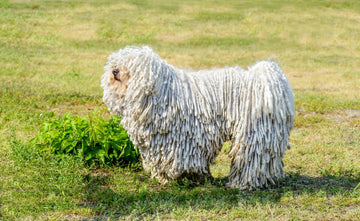Grooming: Hair Regrowth after Treatment with Topical CBD
by Candid Tails on May 07, 2022

Hair Regrowth with Cannabidiol (CBD)-rich Hemp Extract – A Case Series
L. Smith and J. Satino
2021
KEY TAKEAWAYS:
- The endocannabinoid system participates in skin equilibrium via CB1 and CB2 and TRPV receptors
- Pre-clinical studies illustrate evidence of the hair regrowth benefits of antagonizing the CB1 receptors and over stimulating TRPV1 with CBD
- CBD has also been shown to result in hair elongation and to maintain the hair follicle in the growing phase of the hair cycle
- The study showed a 93.5% increase in nonvellus (new) hair after six months of treatment with topical CBD
- No side effects were reported
- Growth of new hair it’s a way of reviving and replacing the damaged hair in your dog's fur
- New hair is healthier, shinier and softer than old damaged hair, since it hasn't been in contact with the harmful stimuli of the environment
OBJECTIVES & HYPOTHESIS → One of the many systems the endocannabinoid system is involved with is the skin, with a substantial number of CB1 and CB2 receptors on various cell lines within the skin. Moreover, CB1 receptors are well expressed in the hair follicle cells. CBD is a negative allosteric modulator of the CB1 receptor and has been shown to result in hair shaft elongation. Additionally, apart from the CB1 receptor, the hair follicle cycle phases are controlled by the ECS vanilloid receptor-1 (TRPV1) and it has been postulated that CBD has therapeutic effects via TRPV1 receptors by excessive activation of the receptor that they become desensitized. Finally, CBD has also been shown to increase Wnt signaling pathways that are involved in the differentiation of dermal progenitor cells into new hair follicles and maintaining the anagen (growing) phase of the hair cycle. Having said so, the objective of the study was to evaluate the efficacy of daily topical application of a CBD-rich hemp oil formation on androgenetic alopecia (AGA), which is the most common cause of hair loss. Secondary goals of the study were to look for adverse effects associated with the daily topical application.
METHODS → A study was done on 35 subjects with androgenetic alopecia (most common cause of hair loss) using a once daily topical hemp oil formulation, averaging about 3-4 mg per day of CBD. The period of treatment was 6 months. The assessed endpoints were: hair counts obtained in a defined, representative area of scalp hair loss and investigator clinical assessment of hair growth.
RESULTS → On average there was 93.5% increase in nonvellus (new, young) hair after six months of once-daily use and all subjects had some regrowth. In concern to specific hair areas, the hair counts in the temporal area increased an average of 74.1% in men, and 55.2% in women. In the vertex area, the hair counts increased an average of 120.1% for men, and 64.9% for women. For all males, the baseline hair count was 18.28 and at six months it was 33.21. For all females, the baseline hair count was 19.57 and at six months it was 30.57. The hair count increased 93.5%, from 18.5 to 32.7when temporal and vertex areas were combined. There were no reported significant adverse effects for six-month application of this CBD topical.




